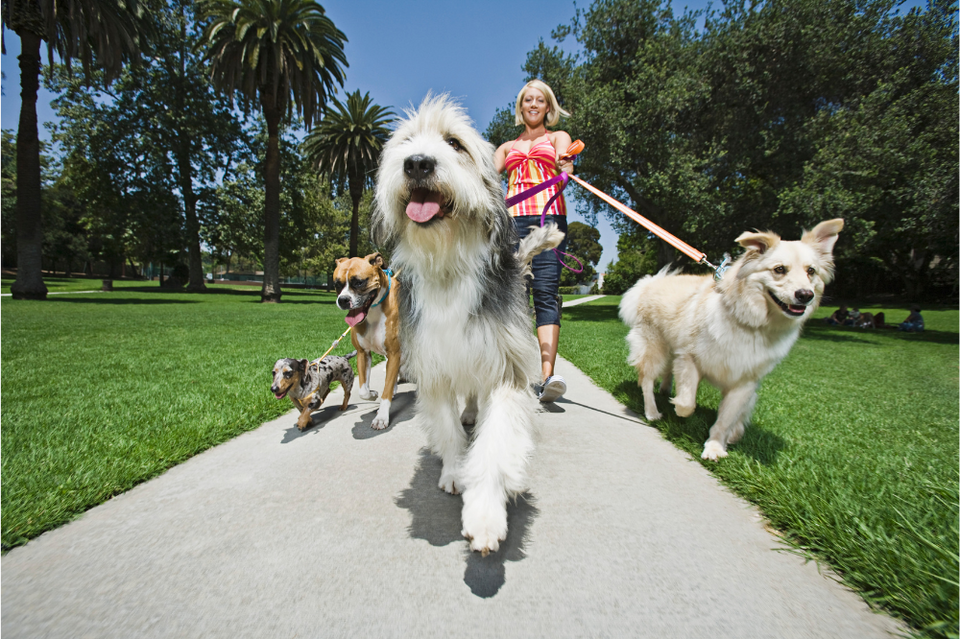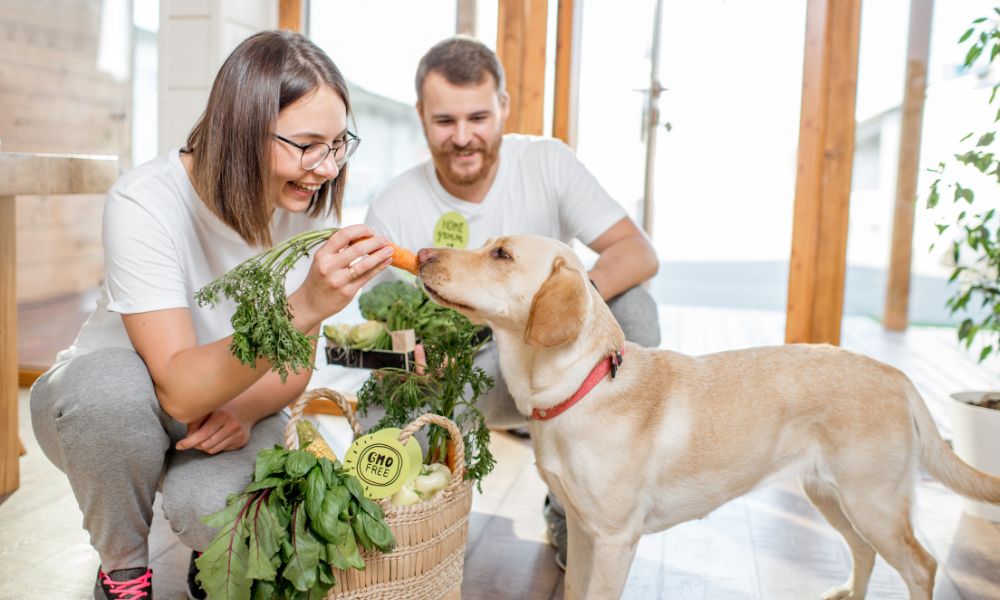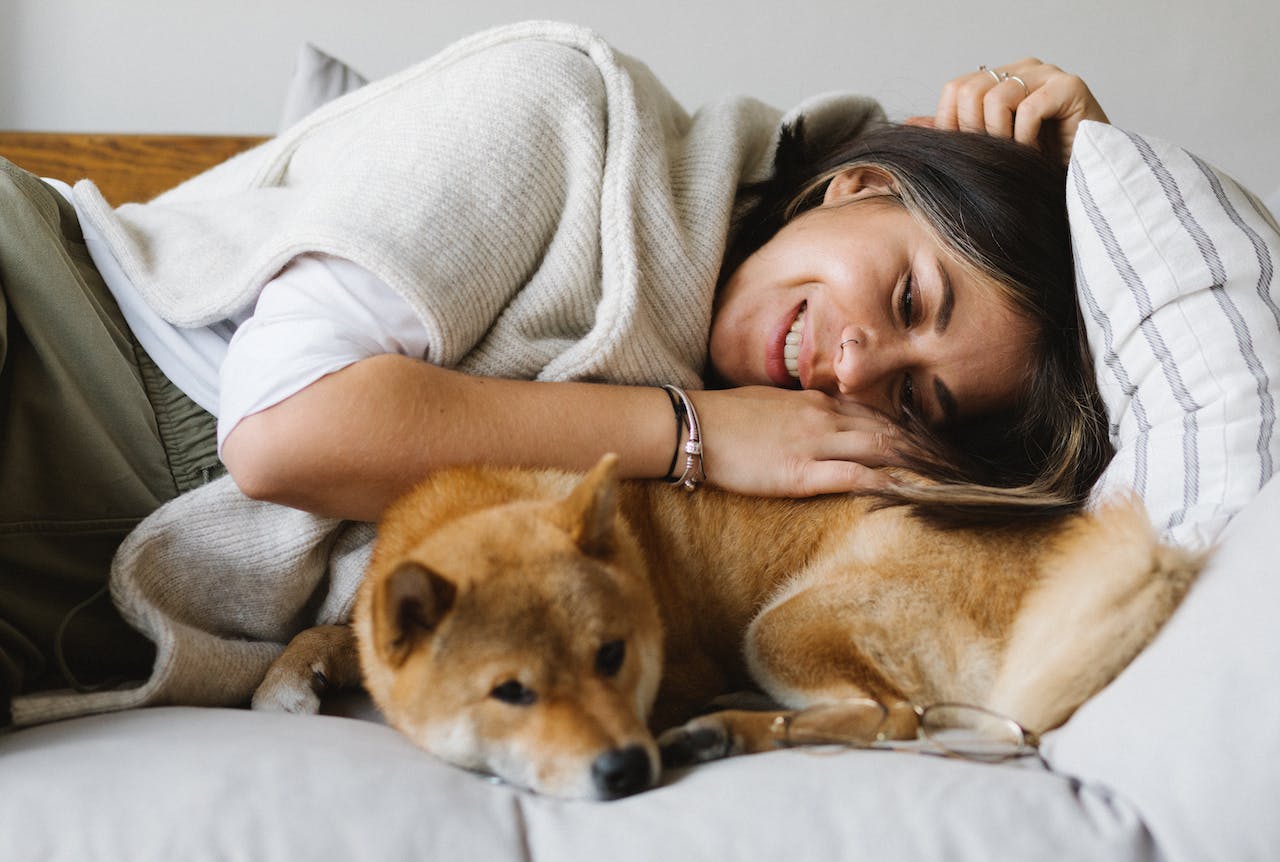
Training benefits of walking your dog

You may have already made (and broken a few of) your New Year’s resolutions, but did you remember to include one very important one for improving your relationship with your dog? Here’s a hint: January is National Train Your Dog Month, and it’s the perfect opportunity to rededicate yourself to helping your dog be on their best behavior.
One of the best ways that you can train your dog is by walking them, ideally three times a day. Whether you have a yard for them to play in or not, the walk together is still important.
The importance of focus
Sure, a dog can use up a lot of energy running around the yard, but that is unfocused and can make your dog more excitable instead of wearing them out. There’s actually a name for this: The Zoomies, although the technical term is Frenetic Random Activity Periods (FRAPs).
A walk, on the other hand, changes the dynamic immediately. Instead of your dog racing all over the place and being distracted by every new stimulus (“Squirrel? Letter carrier? Doorbell?”) putting them on a path under your control shifts their focus to straight ahead.
That’s because the leash creates an immediate connection between the two of you — and you are using a leash, right? Not a harness, not a variable-length lead, and not no restraint at all, because those are not good for your dog’s health or safety, more on which later.
This focus will keep your dog on track and interested with what’s right in front of their nose, although they’ll still instantly notice that darting squirrel or focus in on an approaching dog.
This is why you play such an important role in how your dog acts on the walk.
Maintaining control is all in your mind
A dog can sense a lot about you through that leash, particularly your state of mind. If you’re nervous, scared, or angry, your dog will know. Likewise, if you’re calm, happy, or confident, your dog will pick up on that too.
Your dog will react to the state of mind it picks up from you, so it’s important to be positive, confident, and calm. This will help your dog to relax, knowing that you’re in charge, and just enjoying the sights and smells on the walk.
What you don’t want to do is be tense, timid, or angry. If you’re experiencing negative emotions, then your dog will sense it and either become nervous and erratic themselves, or try to protect you, which can make them aggressive.
I learned this from firsthand experience because I used to have a dog, Shadow, who could be very dog-aggressive on walks. It was interesting because in other regards she was very timid and always looked to me to protect her. But it wasn’t until I had a certain insight and retrained myself that I solved the problem.
The issue was this: When I was walking her and I saw another person with a dog approaching, I would tense up, anticipating that she would try to attack and I’d have to pull her back. My reaction was sending a signal right down that leash: “Daddy is worried. Help him.”
This brought out her instinct to protect me, and led to her aggression. Once I was able to force myself to not react like that, her change was remarkable. She would either ignore other dogs or greet them in a completely calm and friendly manner.
Every walk is an opportunity to learn

Of course, I never would have had this breakthrough if I hadn’t started paying attention to what I was doing, and this is the other part where focus is vital on the walk. Not only should you focus your dog on the task at hand, but you should focus on how you’re feeling and reacting, as well as on how your dog is behaving.
It’s especially important to make note of things your dog does on the walk that you don’t want to happen. Do they try to drag you down the street? Do they excitedly jump on strangers when you meet? Do they try to roll around in particularly gross things in the grass or grab and eat who knows what?
These are all opportunities for training. You just have to be alert, aware, and ready to intervene and adjust the behavior.
The need to create boundaries
One of the big things I used the walk for with both Shadow and her adopted younger sister Sheeba was teaching them boundaries and the importance of listening to me. It was a three-step process for me, but may vary for you.
Step one: They would get excited when the leashes came out and start jumping and dancing around. So I would make them both sit and wait, and do a slow count to ten in my head. If they stayed sitting, then the leashes would go on.
Step two: Open the door to outside, but make them wait while I stepped out. Again, slow ten count, and if they don’t make any false moves, then tell them okay, and the walk begins.
Step three: In which your mileage may vary. I eventually moved to an apartment with a front door and a back porch, but only ever went out the back way. The porch was screened in with another door, so I would make the dogs wait, open that door, and go all the way down the steps while they waited before giving them the okay.
I also used this when crossing streets, which is another very important thing to teach your dog. We’d reach the curb, I’d make them sit and wait, look to see that traffic was clear, and then we’d go.
Consequently, I didn’t have to worry about my dogs running outside whenever I opened the front door because the barrier had been created. It was the same thing with curbs on the walk. They became natural barriers, and my dogs were more inclined to follow the sidewalk instead of cross the street.
Important do’s and don’ts
I mentioned earlier that it’s a bad idea to use a harness, variable-length leads, or no restraint at all when walking your dog, but now I’ll give specifics. No restraint, obviously, means no control.
About the only time I’d condone this is if you live in a very rural area, preferably on your own fenced-in farm, and you’re walking with working dogs that already help out with other things like herding the livestock. Otherwise, if you’re in a suburb or city, this is just asking for trouble.
Variable-length leads are likewise a really bad idea for one simple reason: They often extend too far, and can fail too easily. Dogs on them regularly get seriously injured, either by racing into traffic, or getting too far away from their human to be able to prevent something like a dog attack. It can even injure the dog walker if they get tangled in the lead when it retracts.
Finally, the handles on them are far too easy to drop, leading to a loose dog.
As for harnesses, they are meant for pulling. It’s what a dog in a harness will instinctively do. The pressure on their chest says, “Pull away from this.” A harness is for a sled-dog or other working breed. In my humble opinion, it’s not for your dog on a walk.
At the end of the day
Regularly walking your dog provides endless opportunities for bonding and training. It can also focus their energy so that they don’t get the Zoomies or FRAPs, and make for a calmer household when bedtime comes.
A proper walk will lead to a happily tired dog, all-too-eager to plop down in their own comfortable bed to sleep under their cozy blankie, perchance to dream of many doggie adventures until the next day, the next morning, and the next walk with their most favorite of humans: You.
Share this article
written by


